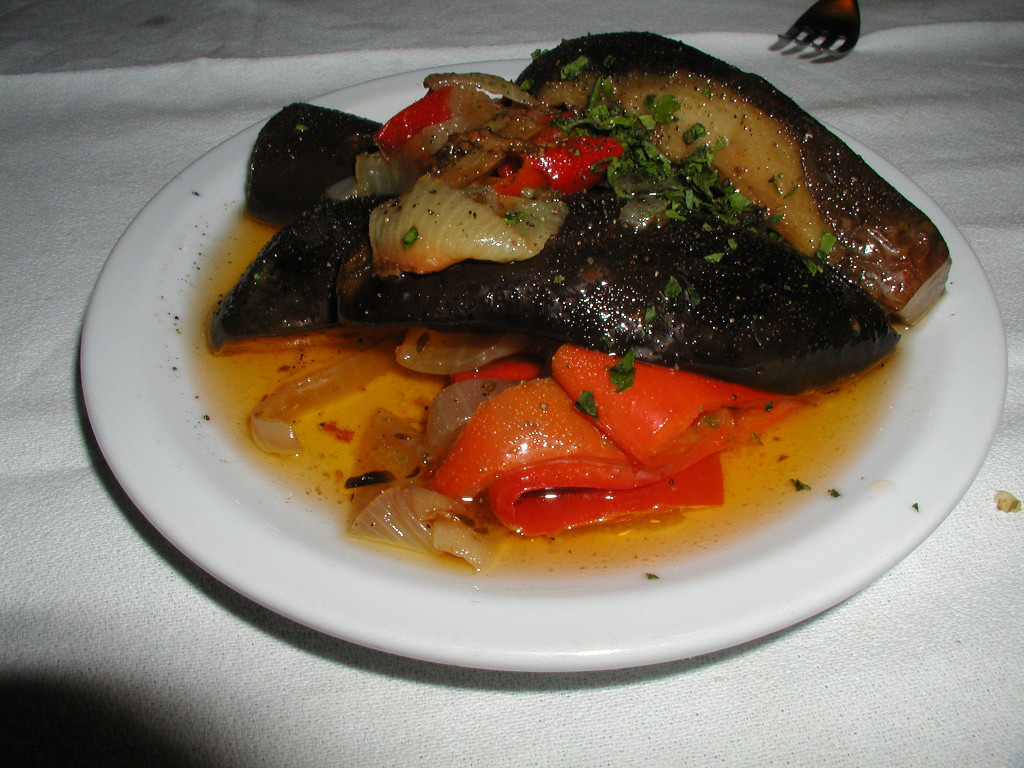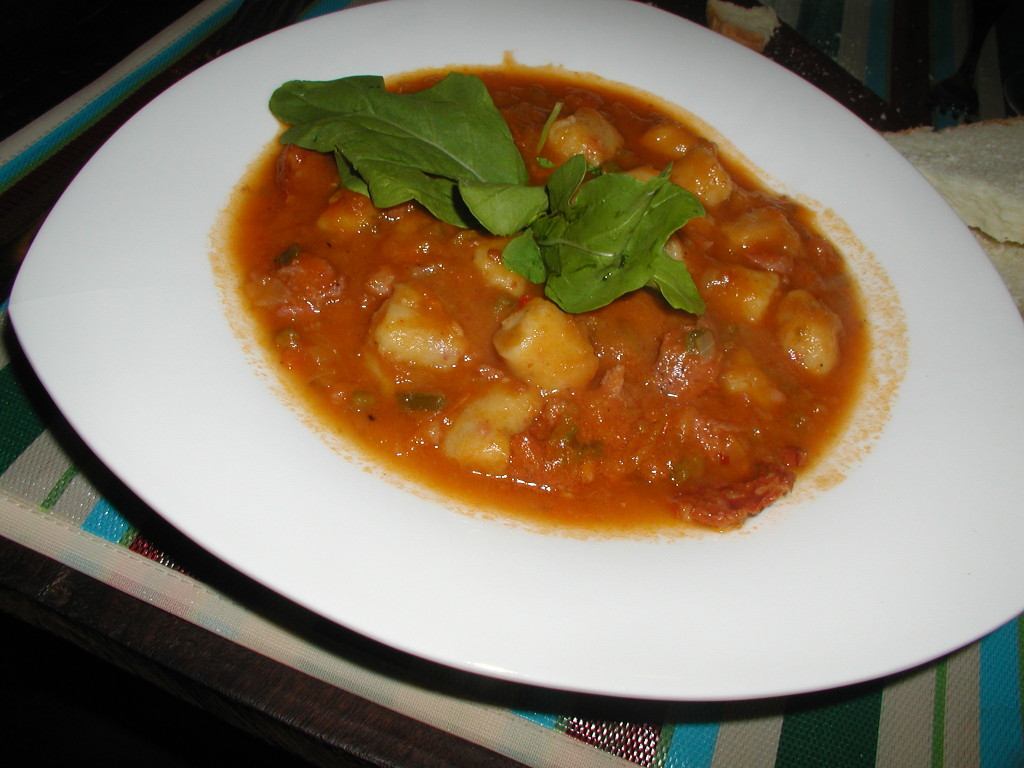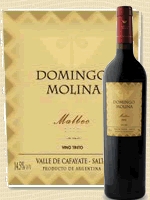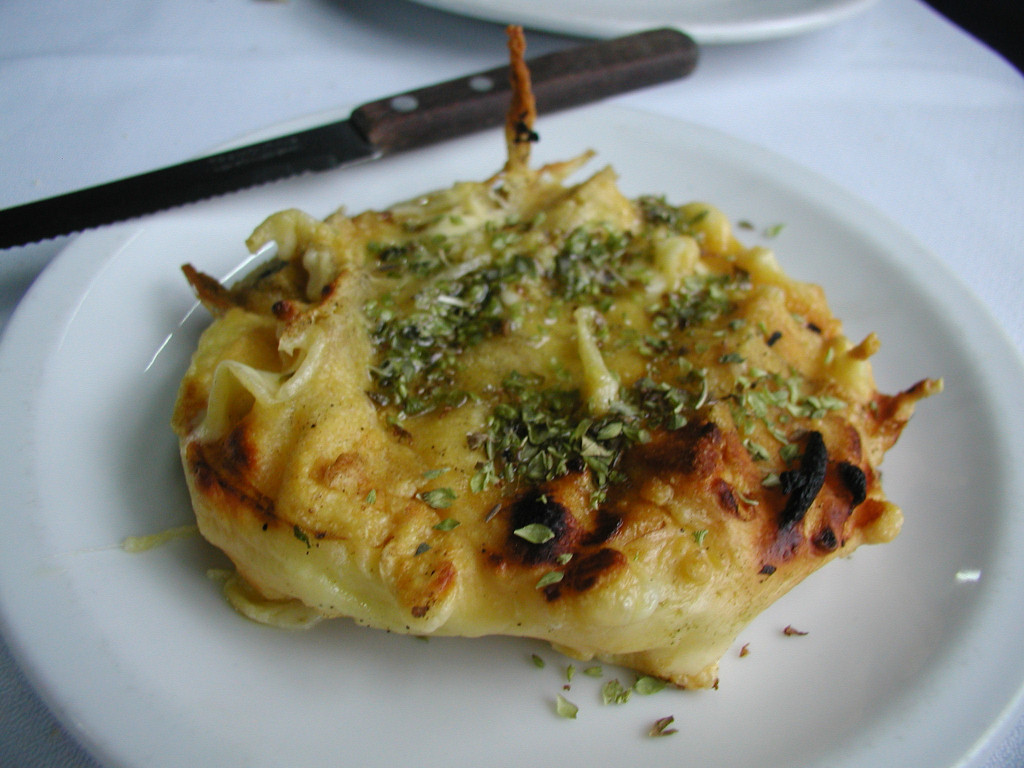October 2006, page 48
Argentina for beginners
You’ve probably headed to Buenos Aires with more recommendations for where you can get a good steak and fries than you know what to do with. Amazing as it may seem given the hype, there’s food available here that isn’t just charred red meat.

Anyone who has more than a passing interest in tango knows the name Carlos Gardel.- here, it’s impossible to turn a corner without seeing something related to him. It’s worth taking yourself out to Gardelito, Humboldt 1668, 4776-5333, in Palermo Hollywood. It’s an old style pub decorated with memorabilia from the golden age of tango, along with a smattering of odd household and workshop objects from the same period. The menu is pretty classic porteño style – parrilla (grill) and pastas – but has some creative variations on many of the dishes. It’s also got a short list of inexpensive wines, and not just the usual suspects. Among the more interesting dishes, a chambota, or medley of cured vegetables; plump malfatti pasta stuffed with local cheeses and herbs; earthy raviolones de seso, or large ravioli filled with cheese and cow’s brains; and a melt in your mouth delicious lomo guisado – a sirloin and mushroom stew. The best things about Gardelito are the huge portions of food and that it will hardly put a dent in your wallet.

Up until recently, you could have stayed in the same general area and popped into one of the most creative small venues around, El Federal. But with five years of success, and competition in the neighborhood appearing like mushrooms after a rainstorm, chef Paola Comparatore picked up and moved to a larger venue in Retiro, at San Martin 1015, 4313-1324. The tables are heavy, dark wood blocks. The banquettes are long, backless, leather covered benches. The chairs are covered with hard-cured cowhide – not just leather, these things still have hair on them. The food being turned out of the kitchen is some of the most interesting takes around on local regional cuisine, with rich interplays of sweet sauces and spicy elements to the dishes. Some of our favorites are her repuelgues tehuelches – small Patagonian lamb and mushroom empanadas, her rolled and fried provoleta, and gnocchi flavored with chimichurri spices (garlic, herbs, and chilies) and topped with a chorizo sausage sauce. The food will run you a bit above an average dinner in Buenos Aires, but you’ll get quality a whole lot above that average – and at lunch, there’s a menu ejecutivo that’s a bargain for a three-course meal.
There’s not a concerted effort in Argentina to produce organic wines. Still, I find myself curious when I spot one, especially if it’s in a small wine shop like La Cava de Vittorio, Arenales 2321, in Barrio Norte, 4824-0647, where I know the wines are very carefully selected by folks who know what they’re doing. When the manager highly recommended giving the new organic Malbec a try – at only twelve pesos and change, I couldn’t pass it up. The strangely named Belgrano 10.640 Malbec 2003 comes from the equally oddly named Bodega A – the wine’s name turns out to be the address of the winery in Mendoza. Really quite good, this is a full-bodied, rich, spicy, wine with lots of cherry fruit – and all fruit, no oak, which I tend to appreciate with Malbec.
 One of the things I hear most often from wine geek friends is that the new, premium level Malbecs, very concentrated and with lots of time in new oak barrels, don’t taste any different than any other “international style” red wine. That’s one of the reasons I like unoaked or lightly oaked Malbec. From the Salta region, one of my favorites is the Domingo Molina Malbec 2002. What I like most about this wine is its vibrancy, because the winery in Salta only ages 10% of the wine in oak, the rest in stainless steel, giving it a touch of roundness, but emphasizing the purity of the fruit. The wine shows spicy dark fruits like blackberry and boysenberry, with a touch of mace and nutmeg, and a long, tasty finish. The wine will run you around 55-60 pesos in local shops, and it’s well worth spending the extra.
One of the things I hear most often from wine geek friends is that the new, premium level Malbecs, very concentrated and with lots of time in new oak barrels, don’t taste any different than any other “international style” red wine. That’s one of the reasons I like unoaked or lightly oaked Malbec. From the Salta region, one of my favorites is the Domingo Molina Malbec 2002. What I like most about this wine is its vibrancy, because the winery in Salta only ages 10% of the wine in oak, the rest in stainless steel, giving it a touch of roundness, but emphasizing the purity of the fruit. The wine shows spicy dark fruits like blackberry and boysenberry, with a touch of mace and nutmeg, and a long, tasty finish. The wine will run you around 55-60 pesos in local shops, and it’s well worth spending the extra.

Gooey, melted cheese with a lightly smoky, slightly crispy exterior. The provoleta, an ubiquitous parrilla appetizer takes a thick slab of provolone which the grill man brushes with olive oil, sprinkles with plenty of cracked black pepper and oregano and throws it on a rack over the coals until it’s browned on the surface and all melty and runny inside. There are numerous variations on provoleta, the most common being the simple substitution of different herbs or spices. Some like to chop fresh or grilled tomatoes or red bell peppers atop. Possibly the most interesting of these variations is the provoleta rellena, or stuffed provoleta, where the slab of cheese is slit open like a pocket pita bread and the middle is filled with slices of ham, tomato, and peppers.
In October 2006, I started writing for this Spanish language magazine, covering their English language section for travellers. I wrote for them for about two years. The copy editor, apparently not fluent in English, used to put each paragraph in its own text box on a two column page, in what often seemed to be random order, making the thread of the column difficult to follow. I’ve restored the paragraphs to their original order.